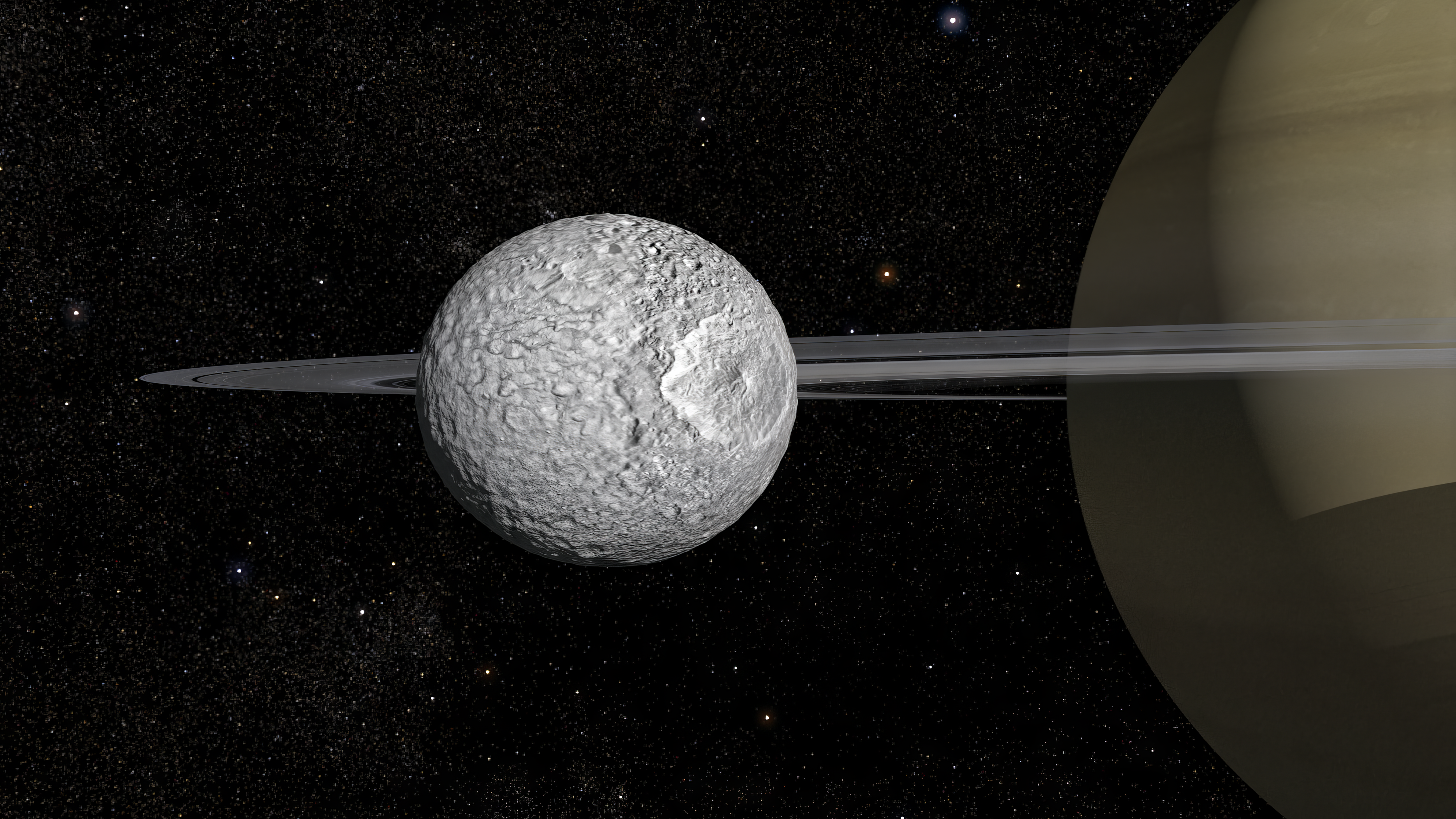
In the search for oases of liquid water in the solar system, Saturn’s diminutive moon Mimas would not have appeared high on many astronomers’ lists. Its icy crust has a dead, inert surface, pocked with craters — including a huge one that gives it the appearance of the Death Star from Star Wars.
But a new study published Feb. 7 in Nature finds that hidden 12 to 19 miles (20 to 30 kilometers) beneath Mimas’ surface lies a global ocean — but one so early in its infancy that it hasn’t had time to affect the surface.
The result means Mimas stands to join the growing family of small icy moons in our solar system with a subsurface ocean, such as its saturnian neighbors Enceladus and Titan and Jupiter’s Europa and Ganymede.
A mysterious wobble
The intrigue began a decade ago, when scientists conducted an analysis of anomalies in Mimas’ rotation. Data from NASA’s Cassini probe had shown that the moon has a wobble. While the same side faces Saturn as it orbits, just like our Moon, it rocks back and forth and side to side very slightly. This study, published in Science in 2014, revealed a mystery: The wobble was twice as much as predicted, which meant something unexpected was happening in Mimas’ interior.
One idea that could explain the wobble was that the moon’s rocky core was ovate in shape, a bit like a giant football. But another was that a layer of liquid water was sloshing around inside, like a raw egg set spinning.
The team behind the new work has gone one step further by accounting for not only the rotation of Mimas, but also its orbit. Their analysis of data from Cassini flybys found that over the craft’s 13-year mission, the point of Mimas’ closest approach to Saturn shifted in space by roughly 6 miles (10 km). But simulations of Mimas with an elongated core showed it should have shifted by about 12 miles (20 km). That discrepancy may not sound like much, but Mimas has a diameter of just 246 miles (396 km). As they ran the models, it became clear that the core of Mimas couldn’t account for the observed motions.
“We are ruling out any interior, in any shape for the core” as an explanation for the observed precession of Mimas’ orbit, says lead author Valery Lainey, a planetary scientist at the Observatoire de Paris. “Not just the elongated one, but any solution.”
A young ocean
You can tell a lot about the core of a moon or planet by how it tugs on nearby objects. But at the time of the 2014 work, an ocean inside Mimas seemed highly unlikely. Just look at its pockmarked surface. In contrast, worlds like Europa and Enceladus, two other ocean moons of the solar system, have few craters and resemble smooth iceballs. This is because the oceans below force their way to the surface as geysers or other geological activity and replenish the surfaces above, acting as a sort of crater eraser.
This is why the team thinks Mimas’ ocean must be relatively new — it hasn’t yet had a chance to affect the surface. But how does something go from a block of ice to harboring a burgeoning ocean?
The likely explanation is that the eccentricity of Mimas’ orbit around Saturn has settled down over time, meaning the orbit went from an oval shape to something close to circular. Other moons of Saturn contributed to this damping of orbital eccentricity. This would have created tidal stresses and friction within Mimas’ interior, causing it to heat up enough to create an internal ocean. The team estimates the ocean is no more than 25 million years old, and possibly as young as 2 million years old.
With Mimas now in a relatively calm orbit, it may not currently experience enough tidal interactions to sustain its ocean. Lainey says Mimas’ interior may begin to freeze again, never having a chance to form geysers like Enceladus. This could also be too short a window to create a biosphere of life.
But oddly, if the ocean freezes, there would then be visible evidence of it on Mimas’ surface.
“After some time, we will eventually see fractures on the surface of Mimas betraying the presence of this ocean,” Lainey says. As the ocean freezes, it will cause ice to bulge out in other areas of Mimas. Planetary scientists have already seen evidence for this effect on worlds like Charon, which is thought to have had a water ocean before freezing solid again.
So add Mimas to the list of ocean moons in our Solar System — but unfortunately, it seems it isn’t there to stay.









